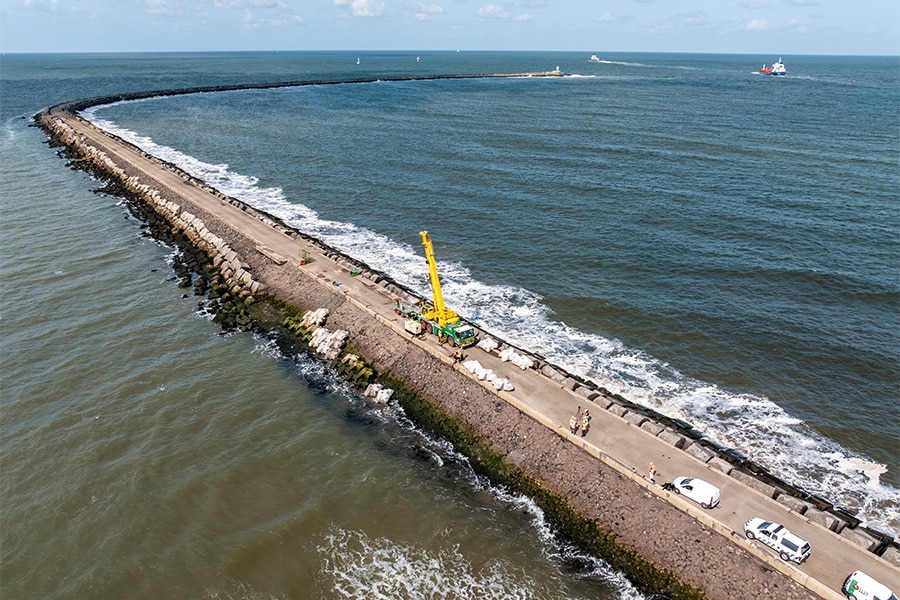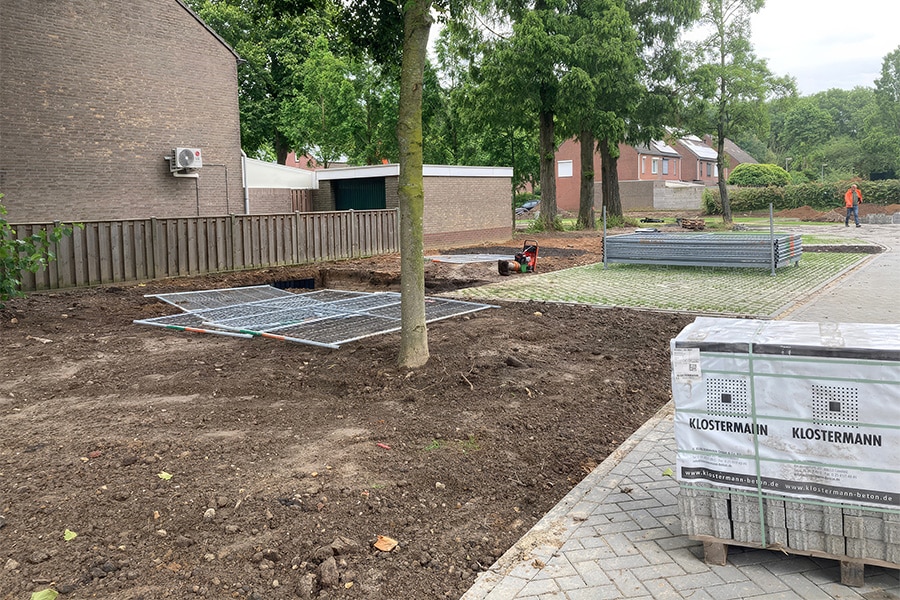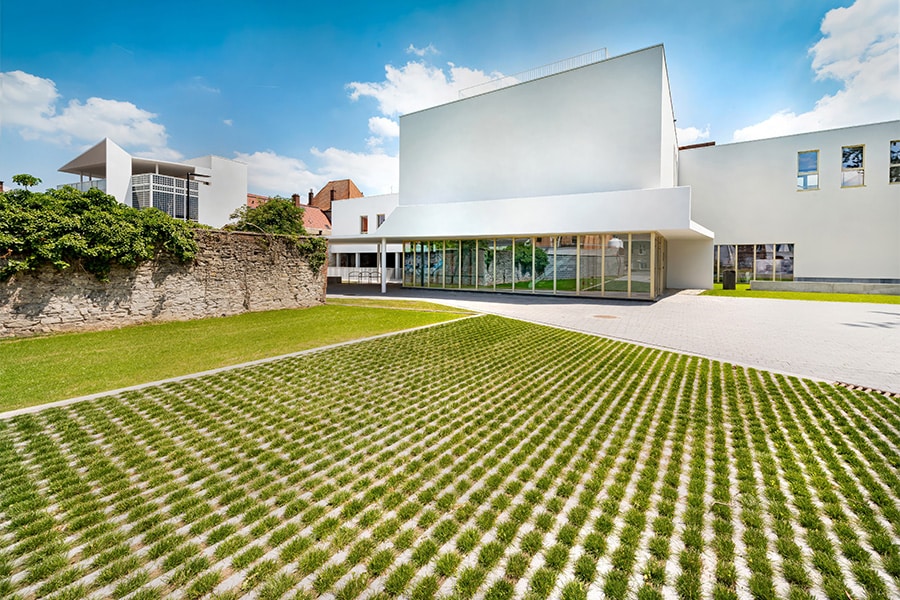
3D concrete printing: a sustainable choice
Street furniture, landscape art objects, talus stairs, bridges and even complete residential houses, it all comes from Weber Beamix's print factory in Eindhoven. Concrete printing offers unprecedented freedom of form, high construction speed at a very competitive price, also with minimal effort. It is also a sustainable choice, because the concrete is "laid" only where it is needed and no additional reinforcement is required.

More than five (2017) years ago, Weber Beamix together with BAM Infra and other partners had a real world first with the world's first fully 3D-printed construction, a bicycle bridge in Gemert. "Following that project, we opened the first printing plant in Eindhoven in 2019 with the aim of putting 3D concrete printing further on the map," says Pieter Bakker, 3D printing project leader at Weber Beamix. "Our focus is actually threefold: on the one hand, on the one hand, the technology of concrete printing is constantly being further developed, fine-tuned and made more sustainable; on the other hand, we are taking on and executing orders and projects and ultimately rolling out this service worldwide."

Great in diversity
Weber Beamix has built up a nice portfolio in a short time. The first printed bicycle bridge in Gemert was in fact the starting signal for a whole series of printed bridges in Nijmegen, Steenwijkerland and now for the province of North Holland, among others. Several bicycle and pedestrian bridges are being printed here as well. Bakker: "In addition, of course, we must not forget the Milestone project, consisting of five printed houses, the first of which has already been inhabited. And recently we even made it into the Guinness Book of Records with the highest printed object in the world (12.10 meters), the 3D printed version of the Burj al-Hamam that is currently stealing the show at the Floriade in Almere. So concrete printing is rightfully great in diversity."

Printed talus stairs
In addition to complete projects, Weber Beamix also focuses on printing standard products. "For example, we have developed in-house with Witteveen + Bos a sustainable alternative to a precast talus staircase," says Bakker enthusiastically. "Our printed version is not only cheaper, but also more than 50% more durable. In addition, we customize the stairs exactly within our standard product range. For example, we recently had the opportunity to supply four large talus stairs 12.5 meters long and 2.5 meters wide for a project in Amstelveen. Through an online tool on our website (www.3d.weber/slopestairs/) one can compose the staircase to size, view the design in 3D and then order online. In principle, we can then deliver these stairs to the construction site within three weeks (!). There is no question of long delivery times with us."
Inspection wells
Besides the "standard" talus stairs, Bakker says there is also a lot of demand for landscape art objects in printed concrete. "After all, organic shapes are very easy to realize with a 3D printer. In addition, of course, we are constantly looking at what other products we can offer an efficient printed alternative for. Together with BAM, we are now researching 3D printed inspection and sewer manholes. The first results are promising. A printed manhole contains less material, no reinforcement, is lighter and can be adapted to the situation on site (think of the connecting pipes). Last-minute changes can be made to the design. Ordering today and printing tomorrow, so to speak, is quite possible."
Rise
In the print factory at Weber Beamix, the printing process is completely digitally controlled. "The software decomposes the 3D model into layers and turns them into dots that are sent to the print robot," Bakker explains.
"The robot goes down these points and lays layers of mortar on top of each other about an inch thick and a standard 5 inches wide. With that we build up the elements or objects layer by layer. The layers then melt together completely that leads to a homogeneous product as if poured in one go. Only without a formwork mold and with minimal effort." The printing mortar is a unique development from Weber Beamix. "Unlike poured concrete, the print mortar is liquid in the hose and the moment the mortar comes to a stop, it stiffens to such an extent that you can then put the next layers on top."
Substantial savings
With printed concrete, the most unique creations can be realized that are unthinkable or very expensive in the traditional way of pouring concrete. Bakker: "Since we can lay down the mortar wherever we wish, we can also omit it where no concrete is needed or desired. 3D concrete printing is thus a material-saving technique. In the first bridge in Gemert, we already managed to save 40% compared to a traditionally poured one. For the bridges in North Holland that we are going to print, the savings already add up to about 50 to 60%. Because we use less material and no reinforcement, printed concrete is also a sustainable choice. Needless to say, we are also working hard to make our mortar more sustainable."
Printed concrete offers plenty of opportunities. Bakker advocates thinking from print technology already in the design of elements and objects. "Topological design lends itself perfectly to 3D printing technology, for example, where the computer calculates the most optimal design to save weight and material. In that respect, the infrastructure sector can take an example from the aircraft industry where topological design and 3D printing techniques are already very common. And it doesn't have to be more expensive by any means. In addition to the products and projects we realize in our own print factory, we as Weber Beamix are of course also suppliers of the print mortar. Companies can even come to us for the complete set-up of a printing plant. We are convinced of the future of 3D concrete printing."




